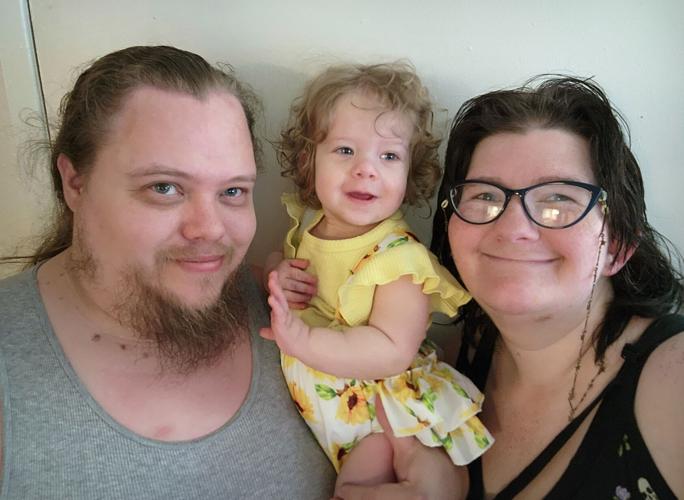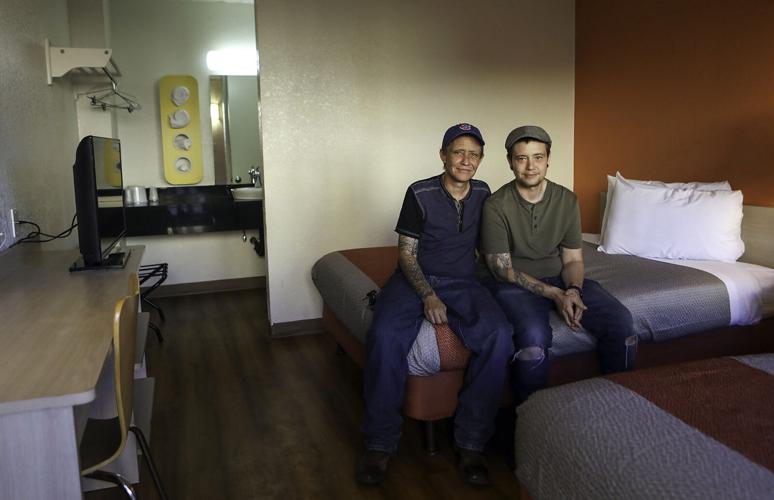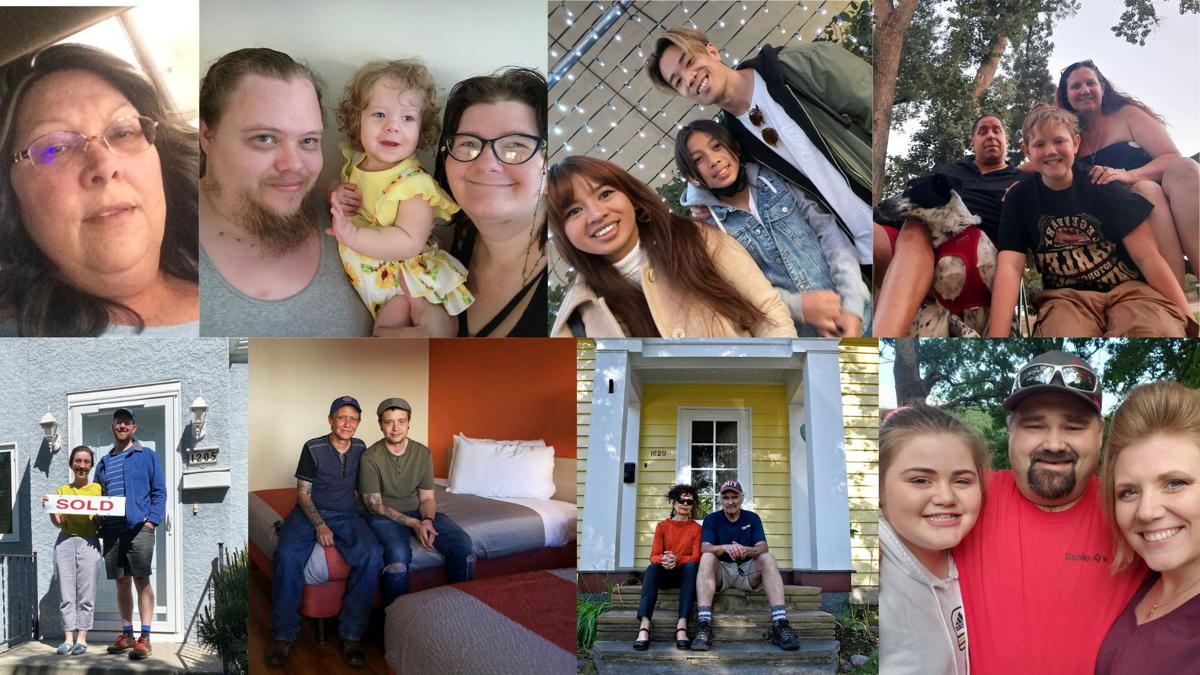Note: This story is part of Squeezed Out, a series from Lee Enterprises that focuses on the escalating housing crisis in the West. Across the region, costs associated with renting or buying property have skyrocketed, forcing many individuals and families to redefine the meaning of home. More than one dozen reporters, photographers and editors across the West contributed to this project.
The overheated housing market has been especially brutal on a group not even looking to buy: low-income renters.
All over the west, renters are being displaced when their apartments are converted to condos or their mobile home parks are sold to developers looking for land to build on. Those who stay watch their monthly payments soar as remote workers move in and push up demand, and would-be homebuyers can’t find places they can afford.
In June, the median asking rent in the U.S. surpassed $2,000 for the first time, according to a Dwellsy analysis of more than 641,000 available rentals. July saw the largest year-over-year percentage increase in rent since 1986, according to the U.S. Bureau of Labor Statistics.
As renters are priced out, they are forced into dilapidated apartments or shabby motel rooms — or they fail to find stable housing at all and end up homeless, according to interviews with more than a dozen renters in six western states.
Of the more than 10.8 million extremely low-income families in the U.S., about 7 million cannot find an affordable rental unit, according to an April 2022 study from the National Low Income Housing Coalition.
Families with extremely low incomes are at or below the poverty level or 30% of the area median income, whichever is higher, the coalition says.
The West has the most severe shortages of affordable rentals, including the state with the worst gap in the nation: Nevada has just 18 affordable rental homes available for every 100 extremely low-income households, the report says. California is next with 23 affordable and available rental units per 100 extremely low-income households. Arizona, Oregon and Florida were tied for third-worst, each with 26 units available per 100 households.
Wally Swenson is the Vice President of Corporate Affairs at Nevada HAND Inc.
Across the West, rents have been skyrocketing, with some places seeing payments from new residents soar by 30% or 40% since the start of the pandemic, according to Apartment List. As of July, Idaho had seen the largest statewide jump in the nation — rents are up 45% since March 2020.
“We’re seeing places where rent prices are going up anywhere between five and 10 times faster than quote-unquote normal appreciation,” said Rob Warnock, a senior research associate with Apartment List.
Meanwhile, incomes have not kept up. Rent has risen more than four times faster than wages since 1985, according to a Clever Real Estate analysis.
The combination, Warnock said, has created an “affordability crisis.”
Food budget
Milk, cereal, bread, bacon.
Reno resident Salem Thornton added up the prices while shopping for himself, his husband and their 1-year-old daughter. Their goal: to keep the total under the $50 left in the family’s bank account.
After a $200 rent hike a few weeks earlier, car troubles, inflation and losing their access to food stamps, money was tight. Too tight.

Salem Thornton, right
Thornton considered the two loaves of bread: one cost about $1; the other, which was smaller and gluten-free, cost about $5. Even though Thornton has celiac disease, he returned the $5 loaf and the other gluten-free items in his cart to the shelf.
Eating gluten leaves Thornton with brain fog, confusion and digestive upset. Thornton, who uses both he/him and they/them pronouns, hopes the symptoms don’t escalate to vomiting, passing out or a trip to the hospital.
“I just have to deal with being really sick now,” they said.

Sarah Saadian, senior vice president of public policy and field organizing for the National Low Income Housing Coalition.
Millions of American families are making similar choices every day, advocates for the poor say.
“The people who are most impacted by the housing crisis are extremely low-income renters,” said Sarah Saadian, senior vice president of public policy and field organizing for the National Low Income Housing Coalition. “Any sort of financial hiccup, whether it’s a broken-down car or a couple days missed of work, those households are at really high risk of falling behind on their rent and facing eviction, and then in the worst cases, they can become homeless.”
‘We can’t afford the rent’
Idaho resident Marj Hayfield, 50, has been searching for a new apartment since May.
Hayfield lives with her 28-year-old son and his 4-year-old son in a two-bedroom apartment in Meridian, Idaho, just outside of Boise. They pay about $1,600 a month — roughly 42% of their combined income, which on a good month is about $3,800.
But now their landlord is increasing their rent to $2,000 a month when their lease renews at the end of September, Hayfield said. That’s about 53% of their income. Rent is considered affordable if it’s 30% of a household’s income.
“My son and I are both worried if we don’t find a place, we’re going to have to sign the contract here,” Hayfield said, “and then be evicted because we can’t afford the rent.”
They also still have to worry about car payments, medical bills and day care for Hayfield’s grandson. They’ve started relying on local food banks to get by.
The family has scoured listings in nearby communities, but they can’t find anything in their price range.
“They’re all asking for three or four times the income that you bring home,” Hayfield said.
An ‘overwhelmed’ market
As first-time home buyers get priced out of the housing market, they stay in apartments longer, making the rental market extremely competitive. The lowest earners get pushed into motels or homelessness.
Susy Vasquez, executive director of the Nevada State Apartment Association, said landlords are requiring people to have an income that’s three times their rent, but many longtime residents can’t afford that.
“The problem is … there’s people that are moving to Las Vegas, moving to Nevada, really, that are exceeding the typical average median income of southern Nevada or northern Nevada,” Vasquez said.
The changes mirror the COVID-19 pandemic, which sparked more remote work and prompted people to rethink where they live. Starting in March 2020, Apartment List data shows a trend of people moving inland from the coast or moving from the heart of major cities to the outskirts, Warnock said.

Rob Warnock, senior research associate with Apartment List.
That caused rent to surge in areas that were previously affordable. Places like Las Vegas, Boise, Spokane and the entire state of Arizona are seeing new renters fleeing astronomical rents along the coast, Warnock said.
“We saw some places just get flooded with new renters and overwhelm the housing markets there,” he said.
Arizona and Idaho, for example, have seen some of the largest rent hikes in the West. Rent in new leases signed in Coeur d’Alene, Idaho, jumped 51% from March 2020 to July — more than double the national increase of 23% over the same period, according to Apartment List data. Boise saw an increase of 46%.
In the Phoenix suburb of Glendale, rent has increased 42% since the start of the pandemic, putting the median price of a two-bedroom on par with Phoenix at $1,500, according to the same data. Over that time period, rents increased 41% in Tucson and 40% in Mesa and Avondale.
“It’s basic supply and demand,” said Jaime Seale, a data writer with Clever Real Estate. “A lot of people want a unit. There’s not enough, so that’s going to jack up the price.”
The search
Arizona resident Blue Montana spent nearly a year searching for an apartment in Flagstaff, including nine months living out of a motel room. He and his husband decided to leave Phoenix after learning their rent was going up from $895 to $1,400 — a 56% spike.
“The rent in Phoenix was getting to where we couldn’t afford to live anywhere safe,” said Montana, who has a 5-year-old. “If I’m going to be struggling to pay, I might as well be up here (in Flagstaff) where it’s safe, so my kid can at least play outside.”
But several potential apartments in Flagstaff fell through.
The family was initially approved for a $1,600-a-month unit, but they couldn’t afford the security deposit. A place in Winslow turned them down because DoorDash income wasn’t included in their qualifications, placing them below the income limit.
Other apartments didn’t allow children or dogs or had a high income requirement, Montana said.
“It was like one thing after another,” he said.

Blue Montana (left) and Owen Montana sit inside the room they, three dogs, and one child called home for nine months, the Motel 6 on Lucky Lane, before they were able to find a more permanent, affordable housing solution. The family has struggled with homelessness in part because of high rent prices in Flagstaff.
Eventually they caught a break. Montana’s family moved into their new apartment in June after other applicants fell through.
Perry White wasn’t so lucky. The 65-year-old Army veteran has lived in a homeless camp in Elko, Nevada, for the last five years. He’s growing weary of the wind that batters his tent and the temperature extremes.
But even a small apartment — if one were available — is out of reach unless he wants a roommate. Veterans Affairs has tried to help, but nothing is affordable.
“It would take everything I make, every dime,” he said.
He’s hoping he can use his Social Security income to buy a used motor home. It’s a solution many of the city’s homeless have chosen.
Call to action
On Aug. 16, the National Low Income Housing Coalition and National Housing Law Project sent a letter calling on the Biden administration to “use every tool available to reduce rent inflation and provide housing stability.”
Saadian said the administration needs to take action to protect renters against the $200, $400 and $500 monthly rent spikes that Thornton, Hayfield, Montana and others have seen.
Reno renter Laura Getchell, 57, said she got a letter from her landlord in May stating rent was increasing from $939 to $1,560 a month — a more than $620 hike.

Reno renter Laura Getchell, 57, said she got a letter from her landlord in May stating rent was increasing from $939 to $1,560 a month — a more than $620 hike.
“We have a largely unregulated rental market that allows landlords to raise rents and impose fees as much as they want,” Saadian said.
The letter calls on federal agencies to employ anti-rent gouging measures, tie renter protections to federal loans, hold landlords accountable for using abusive tactics to kick tenants out, prevent corporate landlords from buying up properties and jacking up prices, and reactivate emergency renter protections used during the pandemic. More than 200 housing and tenant organizations signed a letter calling for similar actions Aug. 11.
But those are just immediate steps. In the long term, Saadian said, Congress and the president need to make housing a higher priority.
Saadian was disappointed that federal lawmakers failed to include major housing investments in the Inflation Reduction Act that President Joe Biden signed into law Aug. 16. An early version of the bill had roughly $150 billion for rental assistance, bolstering affordable housing developments, preserving existing public housing and other housing initiatives — but all that was stripped out of the final version.
Harsh conditions
Wyoming renter Melissa Smith can tell you all about cockroaches.
They can hitchhike on your clothes. They can go without food for a month. They can bite.
Smith and her family of four lived in a vermin-infested apartment in Casper for five months last winter because it was the only place they could afford. The unit had mice and black mold — and plenty of cockroaches.
“They were crawling out of the walls when I would take a bath,” she said.
The family started withholding rent in hopes that the property management company would address the issues, she said, but instead the landlord told them to get out.
They spent a few weeks in a motel and were able to find a rental home they could afford with the help of Wyoming’s pandemic rental relief program, funded by the American Rescue Plan Act. The program paid for the family’s move-in deposit and first three months of rent.
Before finding housing in the spring of 2021, Reno resident Thornton and their husband were also in an untenable living situation: a trailer in a friend’s backyard with no heat, no air conditioning and no running water. The couple huddled together under blankets to keep warm in the winter while Thornton, who is transgender, was pregnant.
That winter they endured some of the “absolutely worst moments of our lives,” Thornton said. But they made it through. And after applying to 40 to 50 apartments, they got one.
“There’s hope even if it’s really dark and bleak,” Thornton said. “There’s always some hope that it’s going to get better.”
Contact reporter Emily Hamer at emily.hamer@lee.net.







